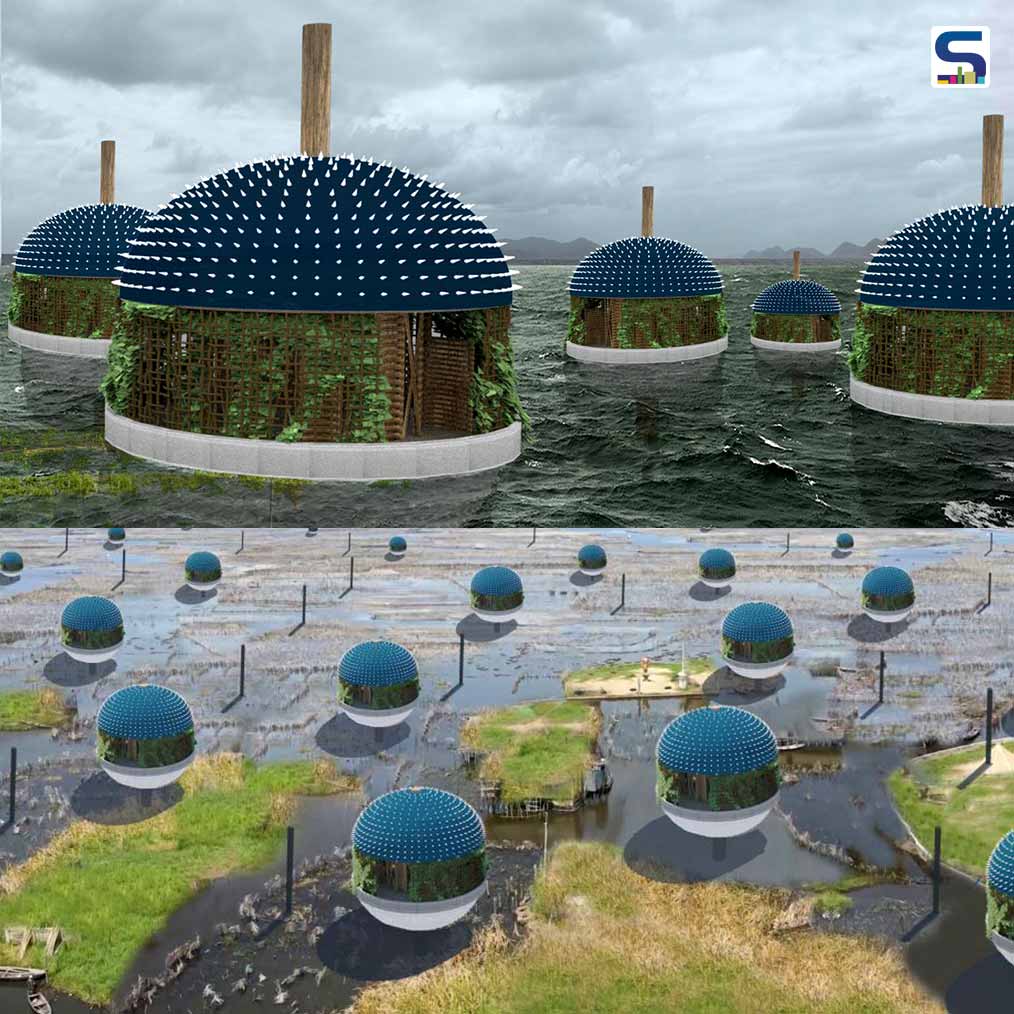
Ganvie- a lake village in Benin, Africa always faces high sea levels, pressurizing people to construct wooden houses that float on water. the result of these poorly built timber houses is that they could not bear the high tides and worn out over time- eventually endangering the lives of the village people. Considering this fact, Iranian architect Sajjad Navidi has come up with a unique concept of "Puffer village"- a system of smart houses that can adapt to the rising sea levels. As its name suggests, the biomimetic structure mimics the shape of a puffer fish-which is a common species in Ganvie's lake Nakoué. Just like Pufferfish who inflate like a balloon to escape predators, the puffer village can fill their balloon skins with water during high tide and water rise to avoid damage or moving away. The project was one of the top 10 projects in 2021 (out of more than 2000 submitted projects) in the category of "Innovation related to sea-level rise" by The Jacques Rougerie Foundation competition. Read more about this innovative project below at SURFACES REPORTER (SR):
Also Read: Glass and Steel Floating Spaceport in Japan for Day Trips to Space | Noiz Architects | Futuristic Designs
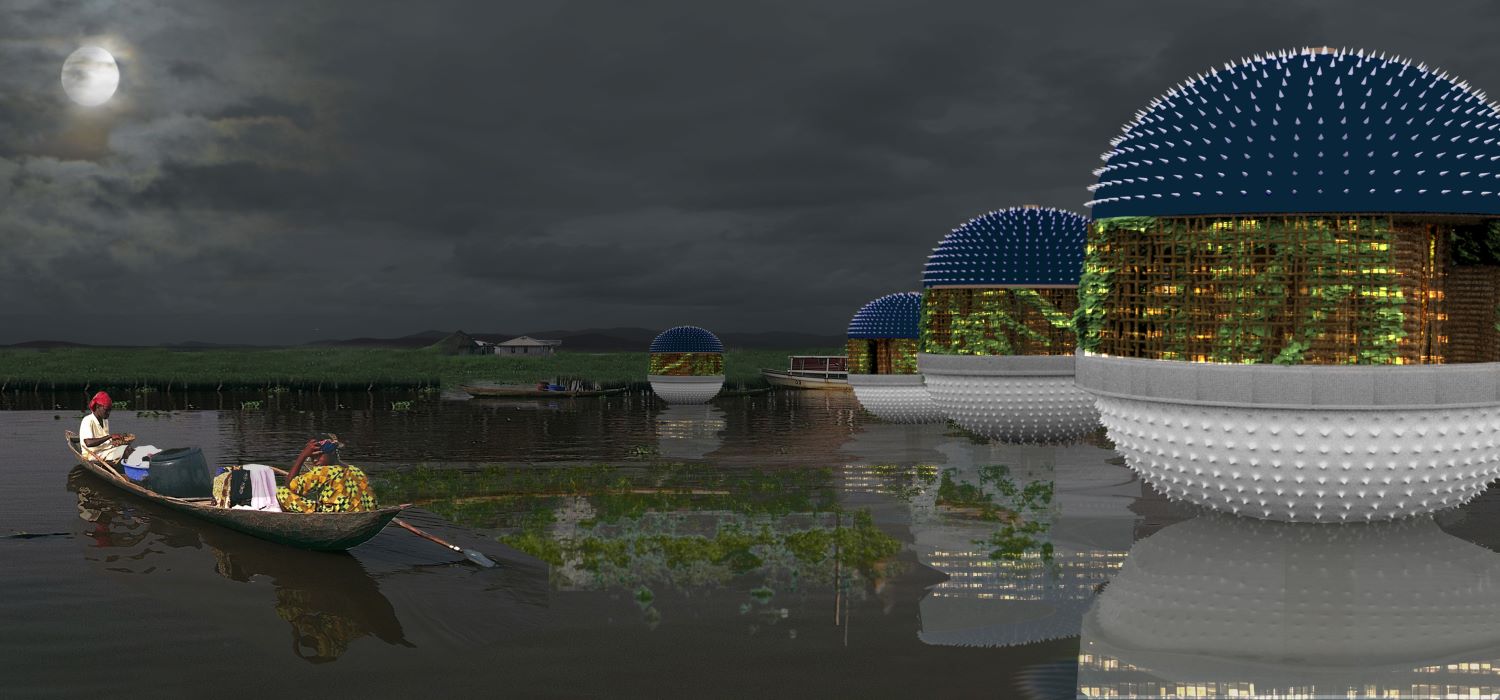
Balloon Surface Inflate/ Deflate Based on Sea Levels and Water Conditions
The architect envisages taking cues from the defense mechanism of Pufferfish to design the floating system.
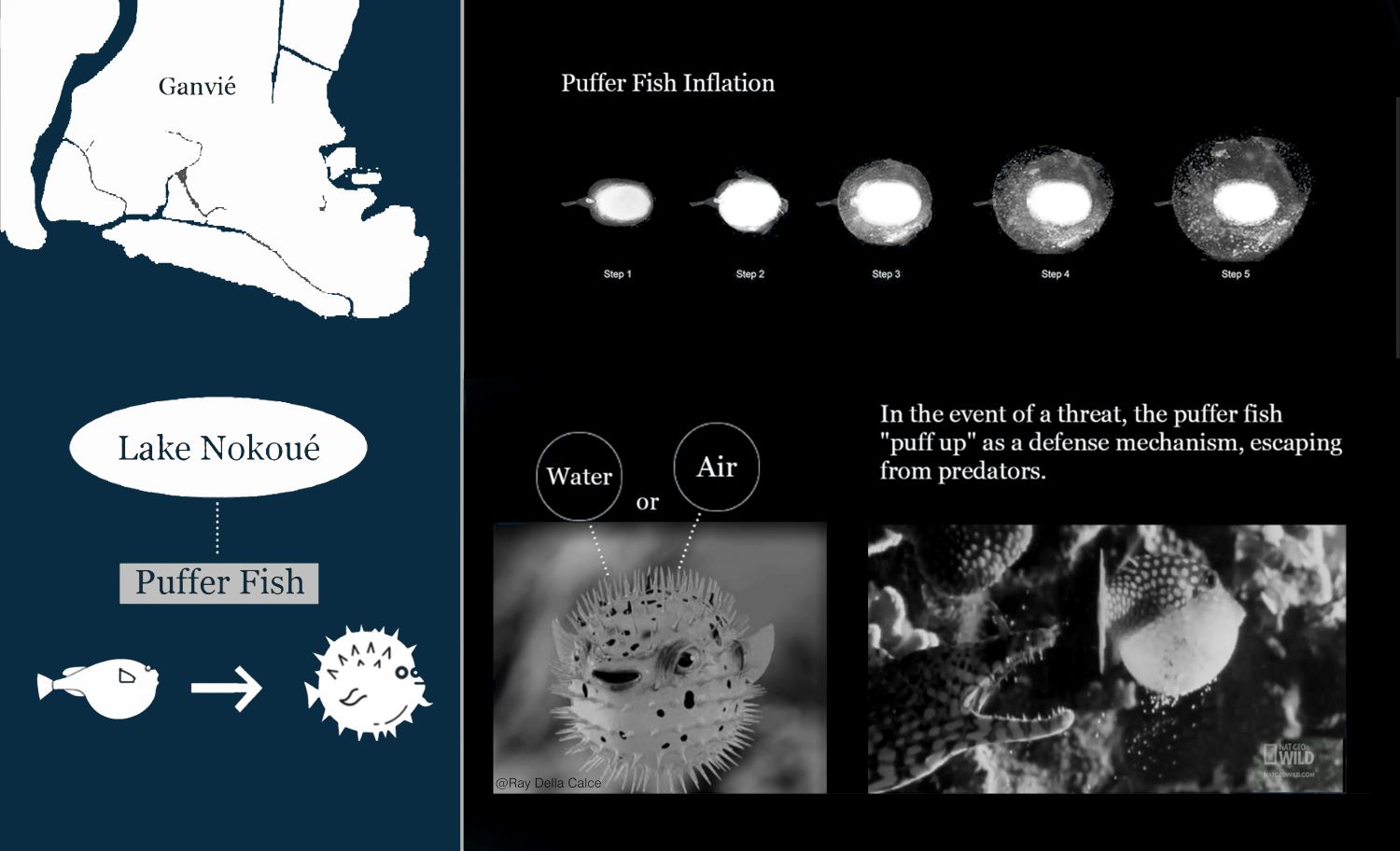 The houses can inflate when water and tides rise in the area or weather conditions deteriorate and deflate when the situation calms.
The houses can inflate when water and tides rise in the area or weather conditions deteriorate and deflate when the situation calms.
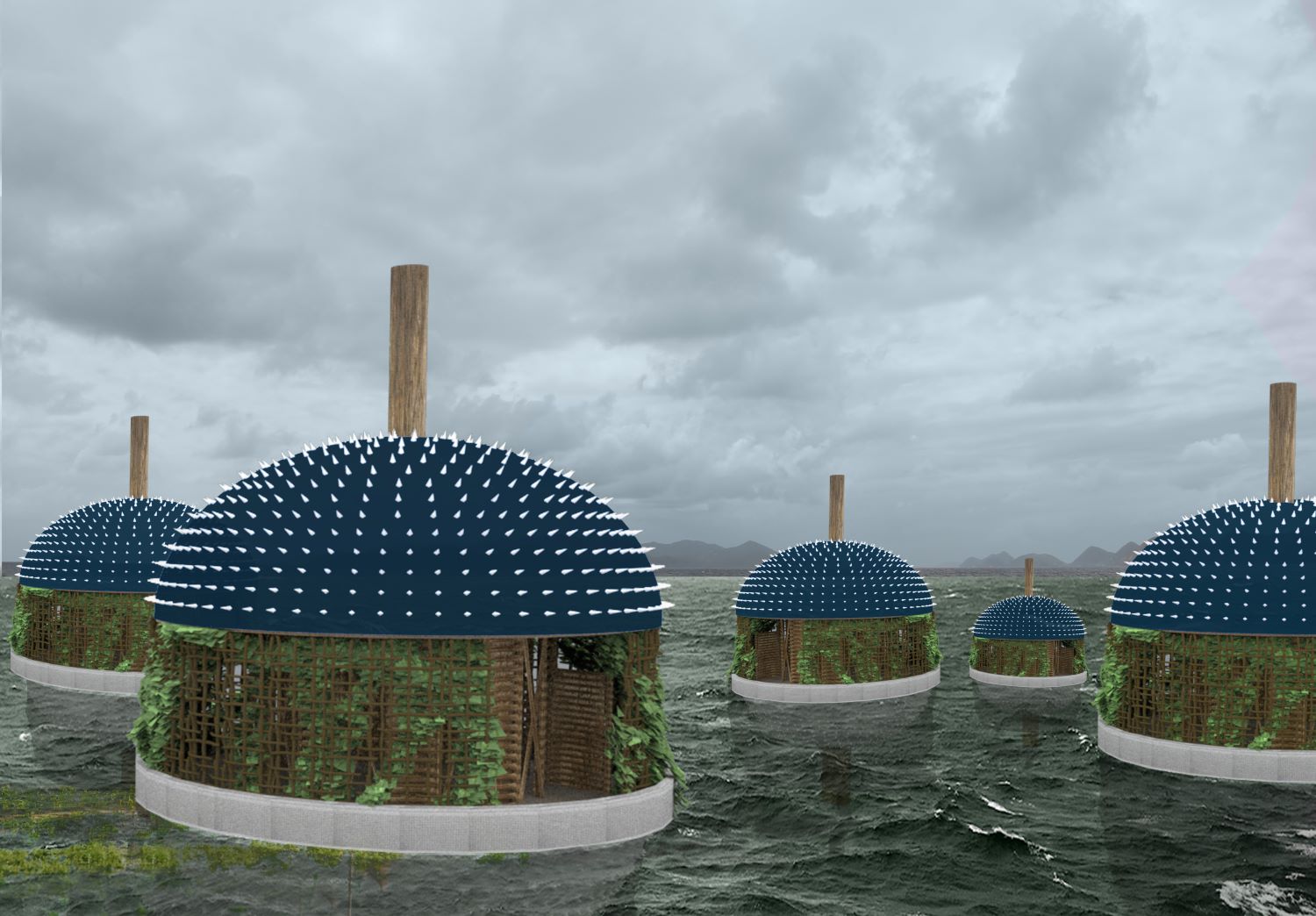 For the geometry of the structure, the architect thoroughly studied underwater sand rings formed by a pufferfish to protect the female eggs or attract a mate.
For the geometry of the structure, the architect thoroughly studied underwater sand rings formed by a pufferfish to protect the female eggs or attract a mate.
Two Sensors Integrated into Each House
Sajjad equipped each structure with two sensors- one that responds to high waves and another to water levels. On a stable day, the balloon structure is closed and it seems similar to houses with flat roofs. But on rainy and high tide days, sensors attached to the structure activate an air fan under the structure and the balloon skin starts to fill up with air, allowing the body to rise to the surface of the water.
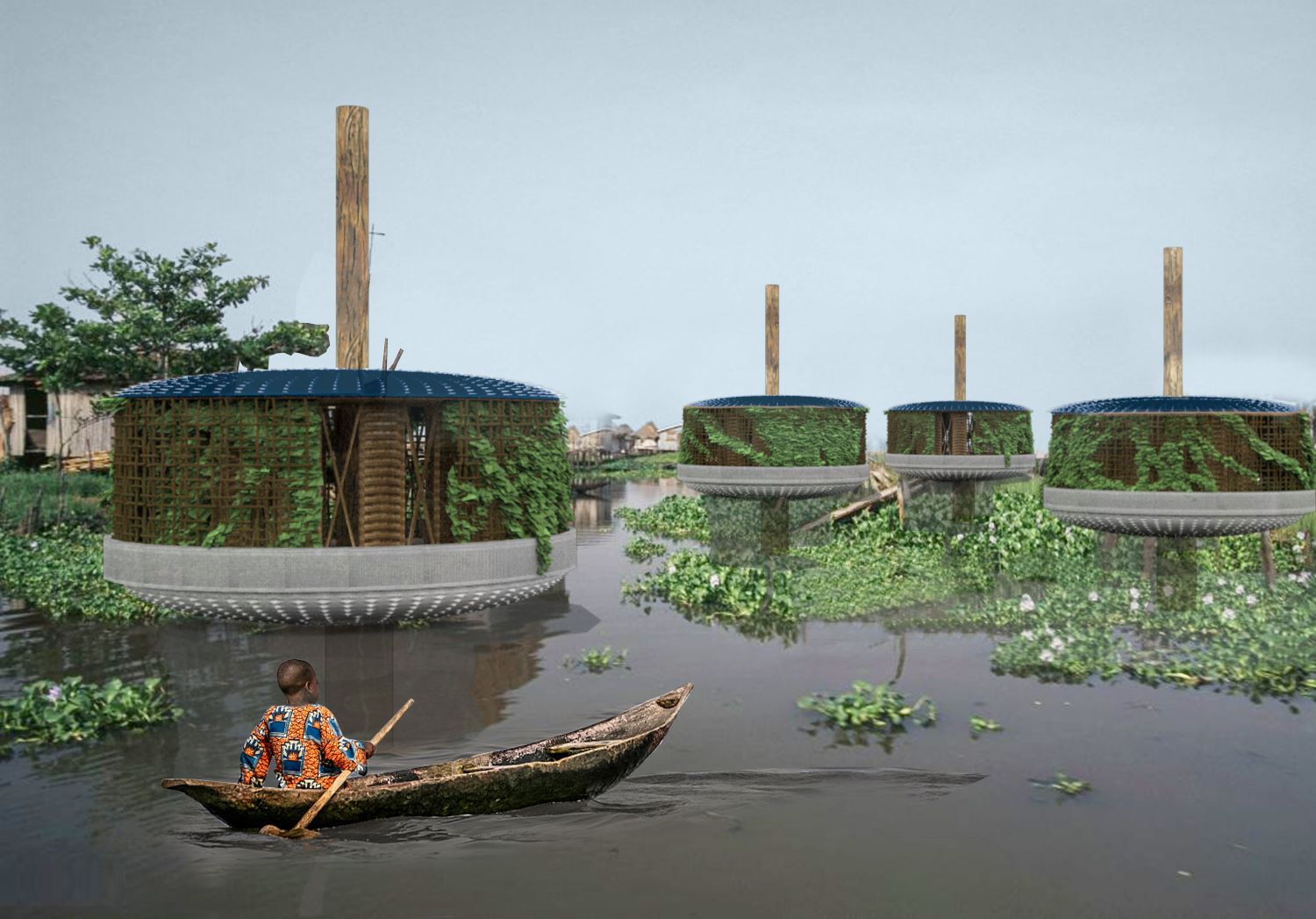 In stormy and rough conditions, impact sensors activate the base pores of the substructure to let it fill up with water. This makes the structure bulky and sturdy avoiding any damage or stopping it from drifting off.
In stormy and rough conditions, impact sensors activate the base pores of the substructure to let it fill up with water. This makes the structure bulky and sturdy avoiding any damage or stopping it from drifting off.
Also Read: A floating & rotating Five star hotel that will generate electricity too |Qatar | Surfaces Reporter
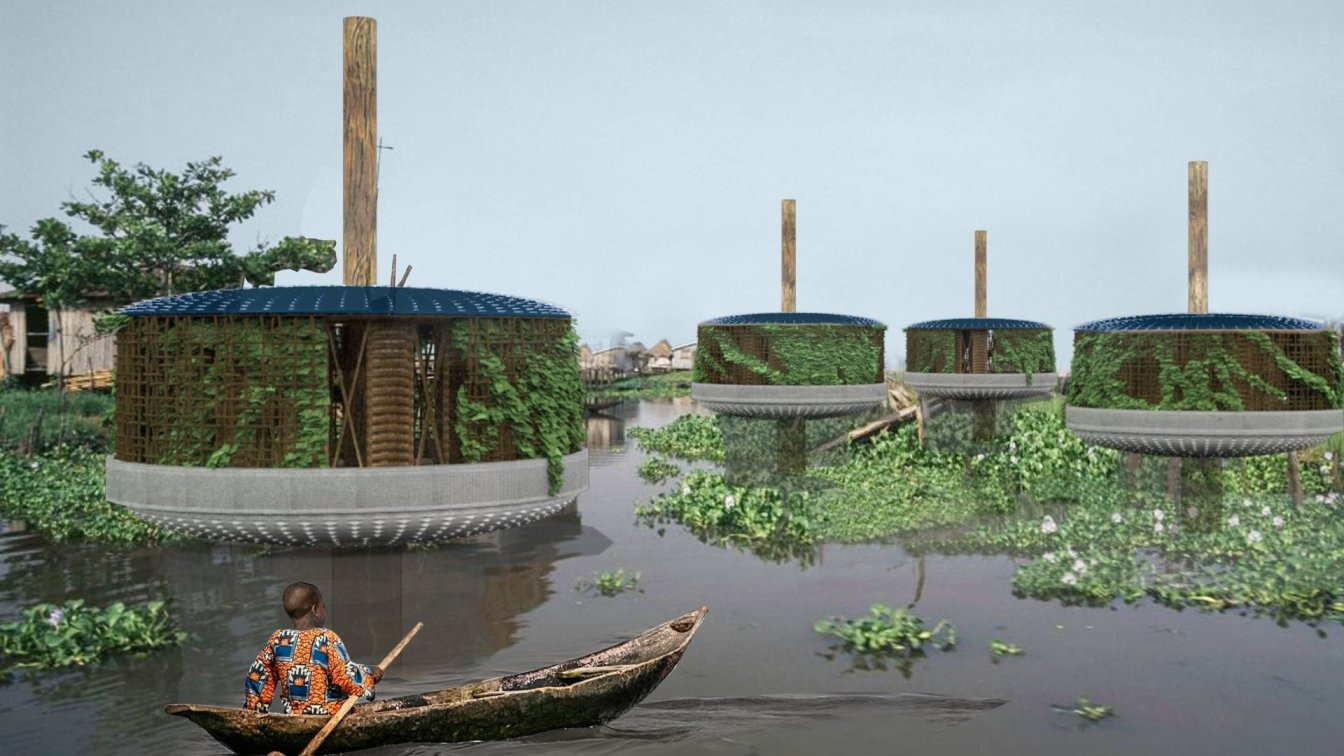
The Project Generates Its Electricity
The structure generates electricity through all clean energies like the Photovoltaic system, Tidal energy and Aquaponic system to fulfill its needs for lighting, air fan system, etc. A Tidal energy system in the below part of the structure yield power from sea waves.
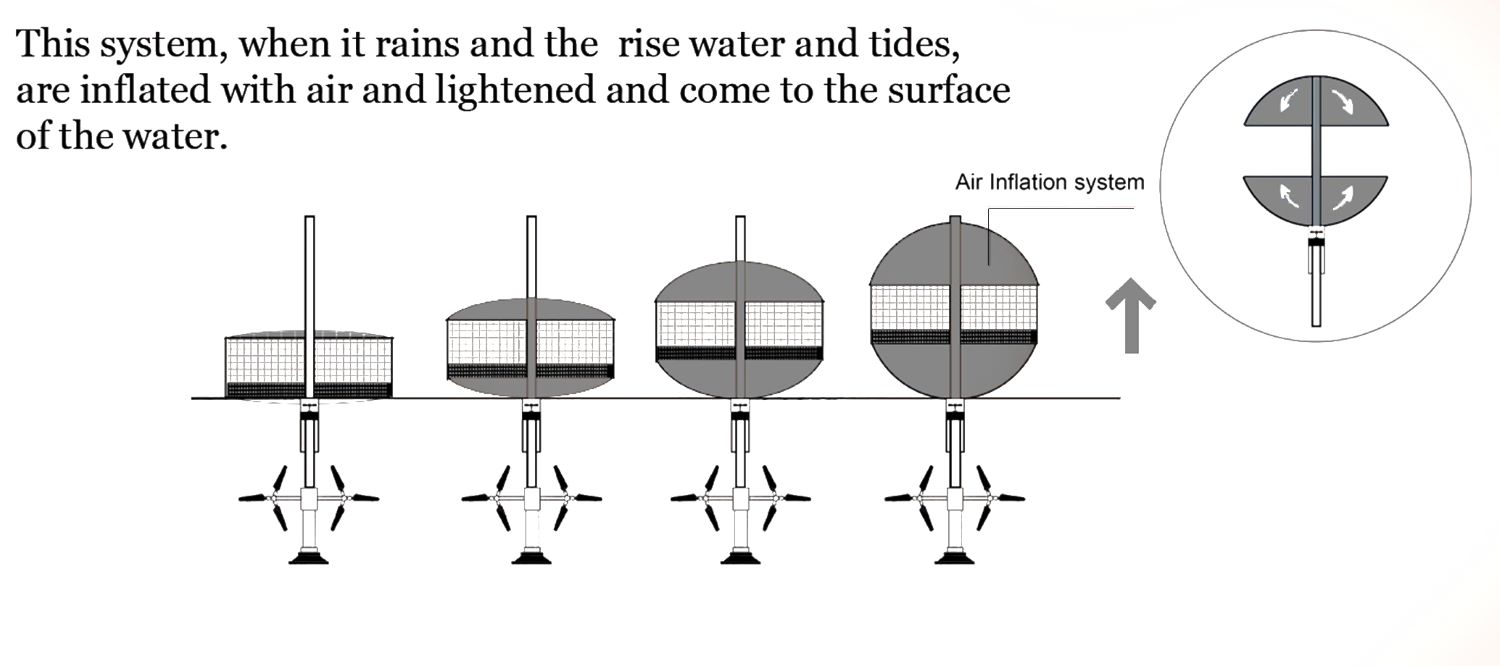
Likewise, the upper part of the balloon skin contains flexible photovoltaic panels that generate electricity from solar radiation.
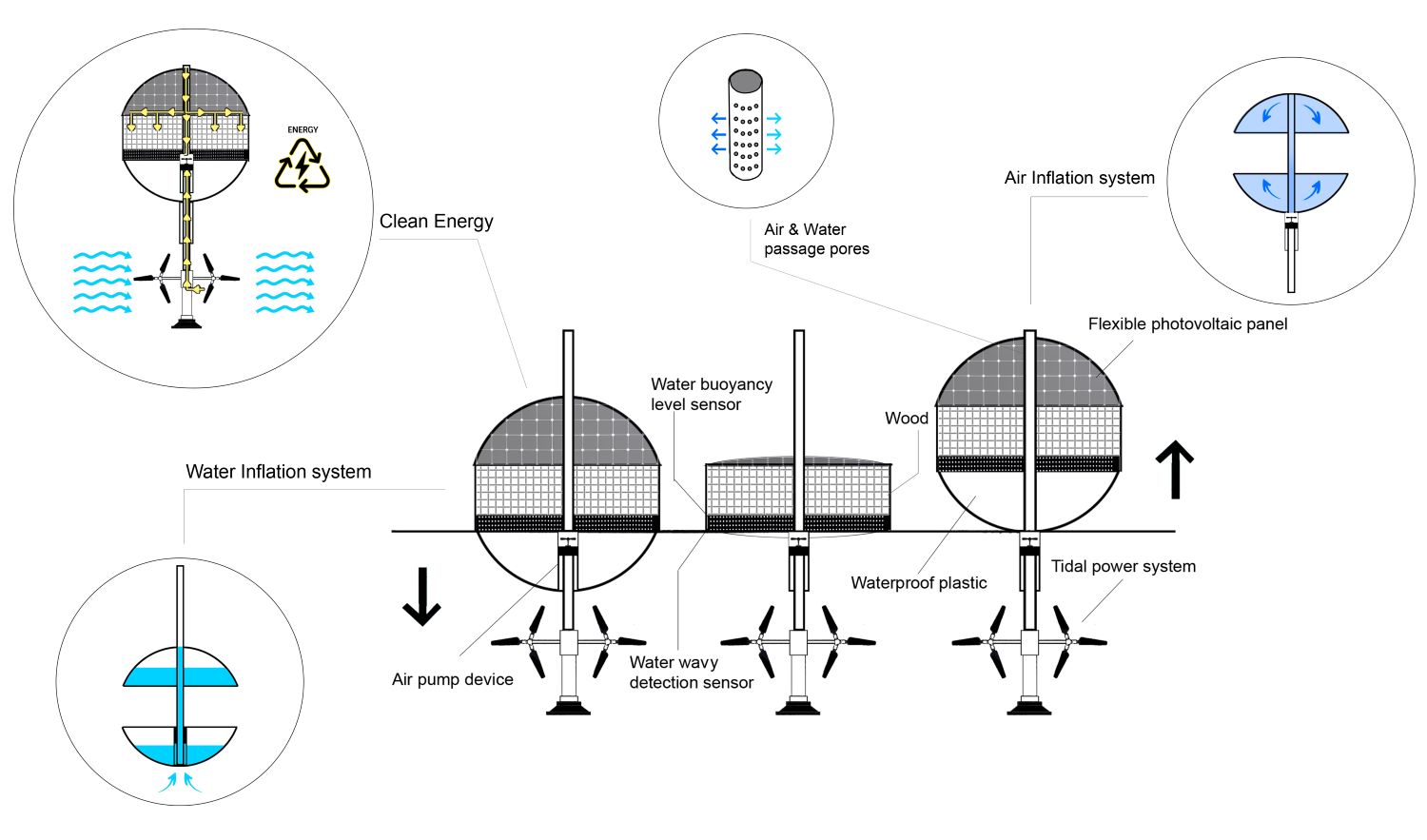 Furthermore, to contribute to the rural economy, the project also encompasses an Aquaponic system in the wooden fences around each house, allowing villagers to grow and cultivate agricultural products. " Many columns have been created in the project site so that the villagers can gradually build their puffer houses on them," said the architect.
Furthermore, to contribute to the rural economy, the project also encompasses an Aquaponic system in the wooden fences around each house, allowing villagers to grow and cultivate agricultural products. " Many columns have been created in the project site so that the villagers can gradually build their puffer houses on them," said the architect.
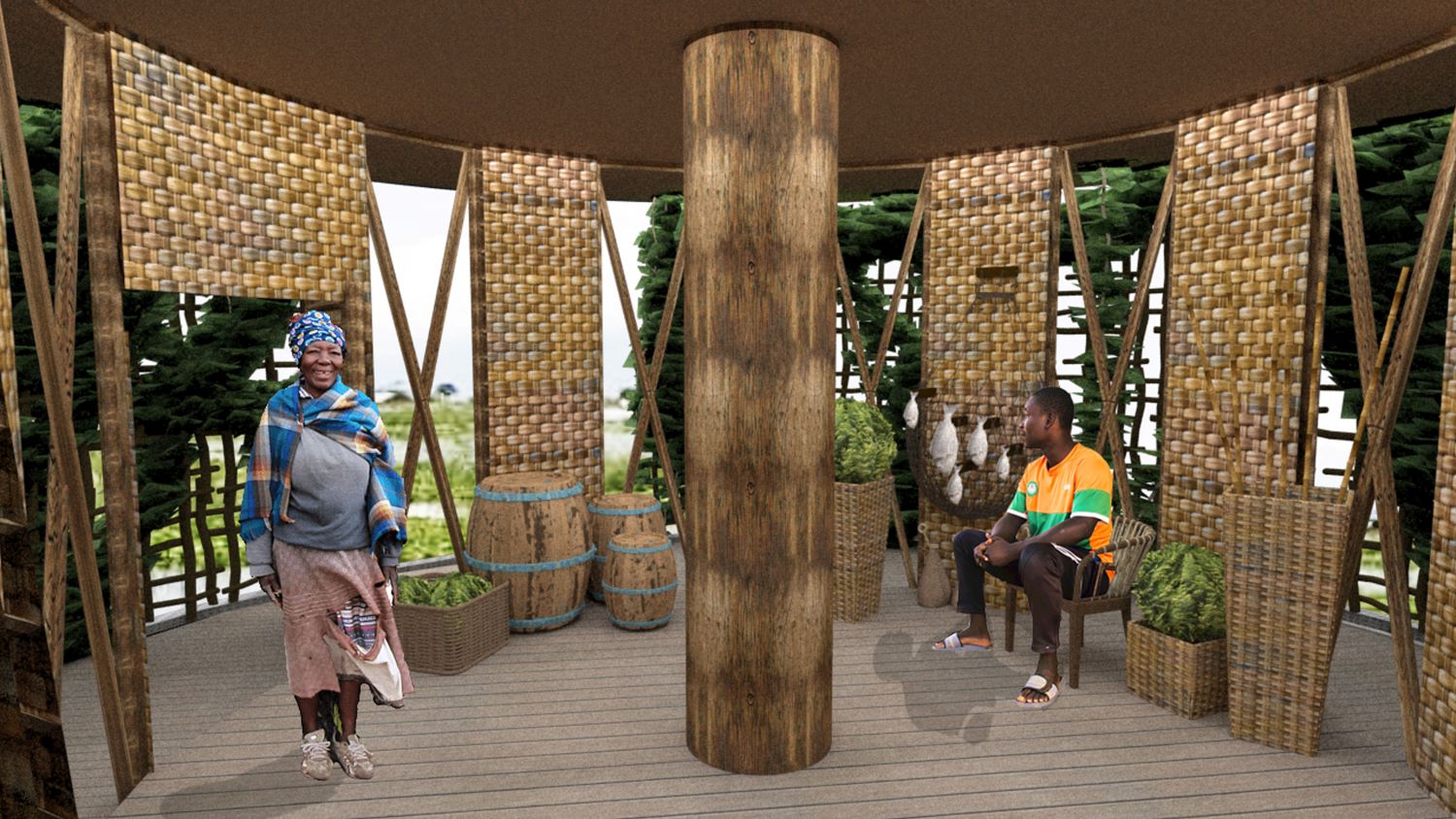
This system is extremely beneficial in all coastal areas and villages where the heavy rains, strong winds, rising sea levels and other big atmospheric phenomena are a real threat to people's existence and future.
Project Details
Project name: Puffer Village
Architecture firm: SN Sajjad Navidi
Location: Ganvie, Benin, Africa
Principal architect: Sajjad Navidi
Design team: Sajjad Navidi
Built area: 25-50-100 m²
Design year: 2021
Status: Concept
Keep reading SURFACES REPORTER for more such articles and stories.
Join us in SOCIAL MEDIA to stay updated
SR FACEBOOK | SR LINKEDIN | SR INSTAGRAM | SR YOUTUBE
Further, Subscribe to our magazine | Sign Up for the FREE Surfaces Reporter Magazine Newsletter
Also, check out Surfaces Reporter’s encouraging, exciting and educational WEBINARS here.
You may also like to read about:
Neom: A $500 Billion Futuristic City Project in Saudi Arabia With Plans for Flying Cars, A Fake Moon, Robot Servants and Dinosaurs
5 Futuristic Smart Cities to Become Reality Soon
Glass and Steel Floating Spaceport in Japan for Day Trips to Space | Noiz Architects | Futuristic Designs
And more…